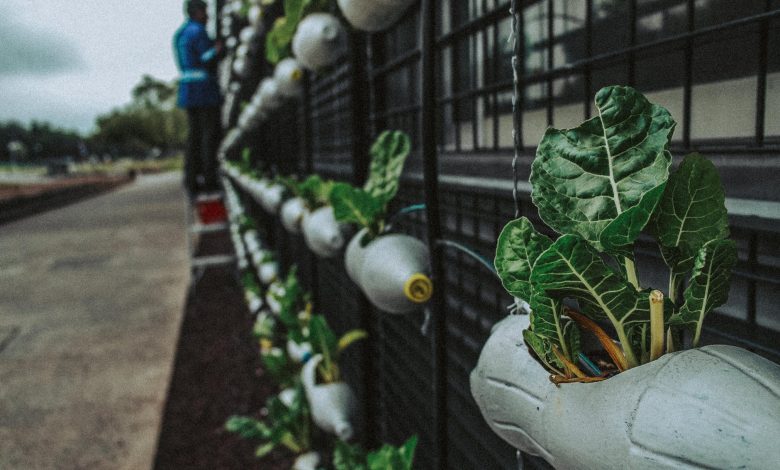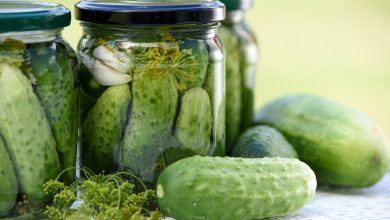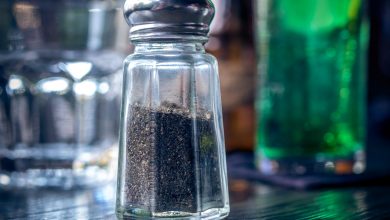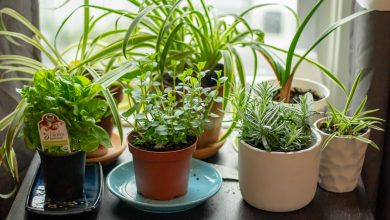The Best Plants To Grow In Your Vertical Garden

Have you always dreamed of having your own vegetable or herb garden but considered it impossible because of space limitations in your living environment? Perhaps you live in an apartment or another urban setting where gardening is seemingly not an option. Luckily, the concept of vertical gardening offers a simple, practical, and beautiful solution to anyone who feels limited from starting a garden due to space restraints.
Vertical gardens not only look beautiful and decorative, but they also offer a variety of useful benefits for your home environment. Having a wall of plants in your living space reduces heat absorption, which can result in decreased energy bills for those who depend on air-conditioning during the hotter months. Vertical gardens also improve the overall air quality by increasing the flow of oxygen, keeping the air fresh and clean.
Vertical gardening enables just about any small or large wall space to be transformed into a garden and essentially takes up no living space. Vertical gardens come in all shapes and sizes and can be added to balconies, patios, kitchens, or any empty wall space in a home. The method involves positioning plants above ground level in such a way that the plants grow upward and are typically stacked on top of other plants in an efficient vertical system. This positioning allows for several plants to be included, not just a few. For small spaces, transforming a wall into a living, green garden is a perfect combination of a practical gardening solution, as well as a stunning and unique decorative addition to your home.

Some Important Tips For Creating Your Own Vertical Garden
Vertical gardens don’t have a specific one-size-fits-all design. A variety of vertical garden starter kits and products can be purchased online, or they can be easily made DIY style. For example, a repurposed canvas shoe organizer that hangs from the wall and contains several “pockets” for shoes makes a perfect vertical garden. Pallets with compartment spaces, stacked shelves with pots, and hanging baskets are just a few other effective design ideas for starting a vertical garden. Essentially all you need is a vertical space where plants can flourish, but the size, style, and design all depends on your preferences.
Consider the amounts and timing of sunlight and shade when deciding on a spot to start your vertical garden. Depending on the plants you will have in your garden, some will require more or less sunlight and shade. This might mean having to plan which plants you would like to include in your vertical garden before you choose the location of your garden so that you can be sure to choose an optimal spot for your plants depending on the amount of sunlight.
Having a vertical garden that can be mobile, or one that has wheels, allows for the possibility of moving the garden depending on sunlight and seasons. Some areas of your house might receive more or less sunlight in the summer and winter, which would make a mobile vertical garden advantageous.
To eliminate this issue, then opt for plants that don’t have picky sunlight requirements or that can thrive with any levels of sunlight and shade year round. Many herbs and leafy greens will thrive in indirect sunlight and do not require overly specific levels of light. If you plan on having edible plants growing in your garden year round, then make sure to opt for a location that is not too cold or too hot, where the average temperature stays consistently around room temperature during any season.
Quality soil is king when it comes to starting and maintaining a healthy vertical garden. Using high-quality soil from the start and sprinkling it with high-quality organic compost from time to time will help ensure that your plants grow healthily and optimally.
These Are Some of the Best Edible Plants to Grow in Your Vertical Garden
One of the biggest perks of having a vertical garden is the chance to pluck a living, organic, and fresh vegetable right from your home garden and put it directly onto your dinner table to be eaten just moments later. The more healthy and versatile your vertical garden is, the less you’ll need to rely on store bought vegetables. Plus, since you’ll be in charge of taking care of your garden, the vegetables coming out of it will be much healthier, since they will be organic and not sprayed with pesticides and chemicals like the majority of store bought produce.
So depending on your depth of gardening knowledge for optimizing the growth of certain plants, you can essentially grow anything in a vertical garden that you would grow in a normal garden, except fruit trees since they require much more space than a vertical garden typically allows.

So what are the best edible plants to grow in a vertical garden?
Vegetables:
- Tomatoes
- Peppers
- Garlic
- Broccoli
- Cauliflower
- Kale
- Carrots
- Melons
- Peas
- Potatoes
- Sweet Potatoes
- Cucumbers
- Lettuces
- Micro-greens
- Spinach
- Bok Choy
- Radishes
- Zucchini
- Small squashes
- Sprouts
- Chard
Fruit:
- Kiwi
- Strawberries
Herbs:
- Parsley
- Chives
- Lavender
- Lemon Verbena
- Basil
- Oregano
- Mint
- Spearmint
- Cilantro
- Rosemary

Decide What You Want to Grow
Some edible plants require more space than others to grow, and this should be taken into consideration when you are deciding on the size and design of your vertical garden. For instance, root vegetables like potatoes, carrots, onions, and garlic will require a bit more of a deeper container to grow in than something like herbs, which have shallow roots.
Different plants have different needs. Here are some specifications which should be taken into consideration before growing certain plants.
Tomatoes
Tomatoes need direct sunlight and well-drained soil. Both bush and vine tomatoes will work in a vertical garden so long as the container they are grown in is proportionate to the size of the full-grown plant.
Since tomatoes grow on a vine or in a bush, the branches will eventually need to be supported by a stake or a trellis to prevent breakage.
Smaller varieties of tomatoes, such as cherry and grape tomatoes, grow extremely quickly and well in a vertical garden, but do require quite a few hours of full sunlight each day.
Root Vegetables
Growing root vegetables, like radishes, potatoes, carrots, garlic, and onions, require vertical gardens with larger containers, at least twelve inches in depth, so that the vegetables can thrive and grow to their fullest potential. Root vegetables prefer loose, sandy soil. Most root vegetables require consistent indirect sunlight during the day, or at least a few hours of full sun per day. Garlic and baby radishes require very minimal space to grow; just make sure that the soil is moist but well-drained.
Leafy Greens
Leafy greens such as kale, chard, lettuce, spinach, and micro-greens generally have shallow roots, which makes them ideal for even the most basic vertical garden designs. They do require a bit of extra surface area to grow to their largest and leafiest potential. Leafy greens are one of the most practical and useful vegetables to grow in your vertical garden, as it will save costs on not having to purchase expensive organic greens from the grocery store.
The leaves of lettuce and leafy greens will tend to wilt while it is growing as a sign that they need to be watered. Make sure to harvest the leaves while they are still relatively young, as the leaves will get bitter and woody if you wait too long.
Zucchini and Squash
Since zucchini and squash grow to be heavy, they will require a vertical garden design that allows for a trellis or stake for support. The vines will need to be secured as they grow.
Zucchini and squash require full sun and are heavy eaters, meaning they will need to have fertilizer added frequently and will need a lot of water.
Broccoli and Cauliflower
Broccoli and cauliflower like full sun and fertile soil. Since these vegetables grow to be relatively large, they will require a vertical garden design that has a bit of extra surface area for them to grow.
Kiwi
Kiwi does not tolerate cold very well, and they like to have a lot of space to grow. Plant them in a location that receives full sun for several hours per day and water daily.
Strawberries
Strawberries need at least eight hours of full sunlight per day and slightly acidic soil in a warm location. With the right conditions, strawberries are a breeze to grow and can potentially yield a lot of fruit in a small space.
Herbs and micro-greens
Without a doubt, herbs and microgreens are some of the easiest plants to successfully grow in a vertical garden because they have shallow roots and they aren’t too picky about growing conditions. Growing a variety of herbs makes for a beautiful looking vertical garden and is a great addition to a vertical garden that is in the kitchen.



